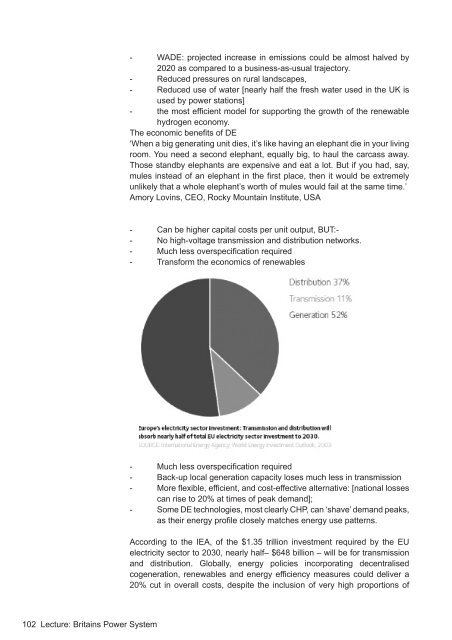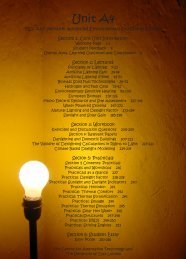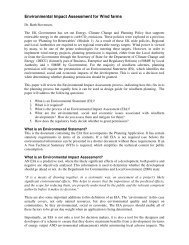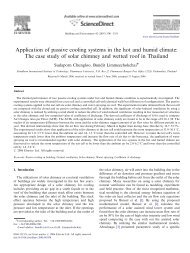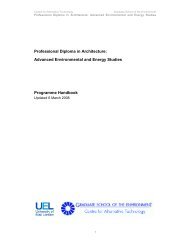Module B1 Study Book - the Graduate School of the Environment
Module B1 Study Book - the Graduate School of the Environment
Module B1 Study Book - the Graduate School of the Environment
Create successful ePaper yourself
Turn your PDF publications into a flip-book with our unique Google optimized e-Paper software.
- WADE: projected increase in emissions could be almost halved by<br />
2020 as compared to a business-as-usual trajectory.<br />
- Reduced pressures on rural landscapes,<br />
- Reduced use <strong>of</strong> water [nearly half <strong>the</strong> fresh water used in <strong>the</strong> UK is<br />
used by power stations]<br />
- <strong>the</strong> most efficient model for supporting <strong>the</strong> growth <strong>of</strong> <strong>the</strong> renewable<br />
hydrogen economy.<br />
The economic benefits <strong>of</strong> DE<br />
‘When a big generating unit dies, it’s like having an elephant die in your living<br />
room. You need a second elephant, equally big, to haul <strong>the</strong> carcass away.<br />
Those standby elephants are expensive and eat a lot. But if you had, say,<br />
mules instead <strong>of</strong> an elephant in <strong>the</strong> first place, <strong>the</strong>n it would be extremely<br />
unlikely that a whole elephant’s worth <strong>of</strong> mules would fail at <strong>the</strong> same time.’<br />
Amory Lovins, CEO, Rocky Mountain Institute, USA<br />
- Can be higher capital costs per unit output, BUT:-<br />
- No high-voltage transmission and distribution networks.<br />
- Much less overspecification required<br />
- Transform <strong>the</strong> economics <strong>of</strong> renewables<br />
- Much less overspecification required<br />
- Back-up local generation capacity loses much less in transmission<br />
- More flexible, efficient, and cost-effective alternative: [national losses<br />
can rise to 20% at times <strong>of</strong> peak demand];<br />
- Some DE technologies, most clearly CHP, can ‘shave’ demand peaks,<br />
as <strong>the</strong>ir energy pr<strong>of</strong>ile closely matches energy use patterns.<br />
According to <strong>the</strong> IEA, <strong>of</strong> <strong>the</strong> $1.35 trillion investment required by <strong>the</strong> EU<br />
electricity sector to 2030, nearly half– $648 billion – will be for transmission<br />
and distribution. Globally, energy policies incorporating decentralised<br />
cogeneration, renewables and energy efficiency measures could deliver a<br />
20% cut in overall costs, despite <strong>the</strong> inclusion <strong>of</strong> very high proportions <strong>of</strong><br />
102 Lecture: Britains Power System


